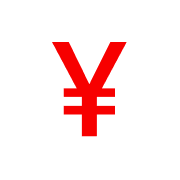
TOMAN to HUF Converter and calculator


IRR TOMAN TOKEN is an on-chain token pegged to the Iranian rial/toman, primarily issued on chains like BSC. It's a niche/high-risk project; publicly available evidence suggests almost no active operation, essentially a "dead" or "zombie project."
Regarding this project, the following topics are of interest:
What is IRR TOMAN Token? What is the relationship between IRR TOMAN Token and the real-world Iranian Rial/Toman? Is IRR TOMAN Token a stablecoin, a payment coin, or a purely speculative token? Can IRR TOMAN Token be used to hedge against Rial devaluation? Is IRR TOMAN Token truly pegged to IRR, or is it simply using the IRR name to create a market coin?
Is the IRR TOMAN token a legitimate project? Is IRR TOMAN Token safe? Is the IRR TOMAN Token's on-chain contract a legitimate BEP20 contract?
Is IRR TOMAN Token compliant? Are there any legal risks associated with using a token like TOMAN? Is IRR TOMAN Token an official Iranian currency, or at least some kind of Iranian stablecoin? Does IRR TOMAN Token have any substantial support from any official/bank/payment institution?
What is the current price of IRR TOMAN Token? How has it fluctuated?
Is there a short-term speculative opportunity for IRR TOMAN Token? Which platforms offer IRR TOMAN TOKEN trading pairs? How do I buy IRR (TOMAN)? How do I sell IRR (TOMAN)?
It's simply an on-chain token packaged around the concept of the "Iranian currency unit," not a truly centrally backed stablecoin, and lacks clear real-world applications. It resembles a highly speculative small-cap coin.
Several public signals, such as extremely low on-chain activity, very inactive social media accounts, and the official website/white paper repeatedly hinting at potential dissolution, indicate the project is in a state of "de facto shock/zombification," far from normal operation. Even if the contract still exists on-chain, it only means the "on-chain code hasn't been deleted," not that the team is actively working on it.
You can develop a checklist to "filter out junk projects" like this, such as:
Is there sustained on-chain activity and development updates?
Does the social media presence offer genuine interaction and transparent disclosure?
Does the white paper/terms overemphasize "you might lose everything" without providing a reasonable business logic?
What is the exchange coverage and liquidity like?
If you want to invest in valuable cryptocurrencies, consider buying BTC first. Fiat currency purchase link: Buy BTC. Spot purchase link: BTC/USDT.
Conversion rates
Convert TOMAN to HUF
Convert HUF to TOMAN
TOMAN to HUF chart
TOMAN to HUF conversion data: Volatility and price changes of IRR in HUF
| Last 24 hours | Last 7 days | Last 30 days | Last 90 days | |
|---|---|---|---|---|
High | 0.004231 HUF | 0.006132 HUF | 0.006969 HUF | 0.007004 HUF |
Low | 0.001399 HUF | 0.001366 HUF | 0.001366 HUF | 0.001366 HUF |
Average | 0 HUF | 0 HUF | 0 HUF | 0 HUF |
Volatility | % | % | % | % |
Change | +56.77% | -52.42% | -39.49% | -31.68% |
Buy
Sell
| Merchants (trades/completion rate) | Price | Amount/limit Low to high | Payment methods | Zero fees Action |
|---|
IRR information
TOMAN to HUF market statistics
Current TOMAN to HUF exchange rate
IRR to Hungarian Forint is falling this week.More info about IRR on Bitget
Hungarian Forint information
About the Hungarian Forint (HUF)
What Is the Hungarian Forint (HUF)?
The Hungarian Forint (HUF), symbolized as Ft, is the national currency of Hungary. It was introduced in 1946 to stabilize the Hungarian economy after World War II, replacing the pengő which had suffered from extreme hyperinflation. The Hungarian Forint is the sole legal tender in Hungary.
The Hungarian Forint is issued and managed by the Hungarian National Bank, known in Hungarian as Magyar Nemzeti Bank. This central bank of Hungary is responsible for maintaining the stability of the national currency, controlling its circulation, and implementing monetary policy in alignment with the country's economic objectives. The Hungarian National Bank plays a crucial role in the financial system of Hungary, including the issuance of banknotes and coins in various denominations of the Forint.
What Is the History of HUF?
The Forint’s name originates from the city of Florence, where gold coins, known as fiorino d'oro, were minted from 1252. Hungary adopted a similar gold-based currency, the Florentinus, under Charles Robert in 1325. The forint was also the currency of the Austro-Hungarian Empire between 1868 and 1892. The modern Forint was reintroduced on August 1, 1946, replacing the pengő, which had suffered from severe hyperinflation post-World War II.
Notes and Coins of HUF
Hungarian banknotes are issued in denominations of 500, 1000, 2000, 5000, 10,000, and 20,000 forints, each featuring prominent Hungarian historical figures and landmarks. Coins come in 5, 10, 20, 50, 100, and 200 forint denominations. The Forint was initially subdivided into 100 fillér, but these coins were phased out due to inflation.
Economic Stability and Exchange Rates
The economic stability of the Hungarian Forint (HUF) has been a journey of significant transformation, especially since the fall of communism and Hungary's transition to a market economy. In the early 1990s, this shift brought about considerable inflation, peaking at 35% in 1991. However, the subsequent years saw a stabilization effort, with inflation dropping to single digits between 2001 and 2022. This period of relative stability was disrupted in February 2023 when inflation climbed to 25.80%, influenced by global economic factors such as the war in Ukraine and broader economic uncertainties. Despite these challenges, the Forint has maintained its status as a fully convertible currency, crucial for Hungary's trade and economic relations.
The exchange rate of the Hungarian Forint has seen fluctuations reflective of both domestic economic policies and global financial trends. As Hungary is a member of the European Union but has not adopted the Euro, the Forint’s value against the Euro and other major currencies like the U.S. dollar is a critical economic indicator
Why Doesn’t Hungary Use the Euro?
Hungary has not adopted the Euro for several reasons, despite initial plans to do so. Initially, Hungary aimed to replace the Hungarian Forint with the Euro around 2007 or 2008, later targeting January 1, 2010. However, these plans were abandoned due to high budget deficits, inflation, and public debt, preventing Hungary from meeting the Maastricht criteria. The global financial crisis of 2008 further complicated matters, despite aid from the IMF, EU, and World Bank. The Fidesz government, elected in 2010, has shown a soft Eurosceptic stance, maintaining the Forint and postponing discussions about adopting the Euro. Prime Minister Viktor Orbán stated that Euro adoption would not be considered until Hungary's public debt reached a 50% threshold, a significant reduction from its level in 2011.
Additionally, broader reasons why some EU countries, including Hungary, choose not to adopt the Euro involve maintaining financial independence. This independence allows for control over key issues like setting monetary policy, handling national debt, modulating inflation, and the ability to devalue the currency in certain circumstances. The European Central Bank sets economic and monetary policies for all Eurozone nations, which means individual states lack the independence to craft policies tailored to their own conditions. This lack of economic independence and the desire to maintain control over national financial policies contribute to Hungary's decision to retain the Forint instead of adopting the Euro.
Popular conversions










Hot promotions
How to convert TOMAN to HUF



Popular IRR Converter










Popular cryptocurrencies to HUF










TOMAN to HUF Conversion tables
| Amount | 08:38 am today | 24 hours ago | 24h change |
|---|---|---|---|
0.5 TOMAN | Ft0.001332 | Ft0.0008495 | +56.77% |
1 TOMAN | Ft0.002664 | Ft0.001699 | +56.77% |
5 TOMAN | Ft0.01332 | Ft0.008495 | +56.77% |
10 TOMAN | Ft0.02664 | Ft0.01699 | +56.77% |
50 TOMAN | Ft0.1332 | Ft0.08495 | +56.77% |
100 TOMAN | Ft0.2664 | Ft0.1699 | +56.77% |
500 TOMAN | Ft1.33 | Ft0.8495 | +56.77% |
1000 TOMAN | Ft2.66 | Ft1.7 | +56.77% |
TOMAN to HUF FAQ
What factors influence the conversion rate of TOMAN to HUF?
Popular exchange rates — Crypto-to-Fiat converter
The price of IRR in the US is $0.{5}7988 USD. Additionally, IRR’s price is €0.{5}6919 EUR in the eurozone, £0.{5}6103 GBP in the UK, C$0.{4}1126 CAD in Canada, ₹0.0007084 INR in India, ₨0.002252 PKR in Pakistan, R$0.{4}4261 BRL in Brazil, and more.
The most popular IRR currency pair is the TOMAN to Hungarian Forint(HUF). The price of 1 IRR (TOMAN) in Hungarian Forint (HUF) is Ft0.002664.
Popular fiat
Popular areas
Purchase other cryptocurrencies with similar market cap








Other crypto price predictions
 Bitcoin(BTC)Price predictions
Bitcoin(BTC)Price predictions Ethereum(ETH)Price predictions
Ethereum(ETH)Price predictions Celestia(TIA)Price predictions
Celestia(TIA)Price predictions Solana(SOL)Price predictions
Solana(SOL)Price predictions Worldcoin(WLD)Price predictions
Worldcoin(WLD)Price predictions Bittensor(TAO)Price predictions
Bittensor(TAO)Price predictions Dogecoin(DOGE)Price predictions
Dogecoin(DOGE)Price predictions PepeCoin(PEPECOIN)Price predictions
PepeCoin(PEPECOIN)Price predictions Pandora(PANDORA)Price predictions
Pandora(PANDORA)Price predictions ORDI(ORDI)Price predictions
ORDI(ORDI)Price predictions







































